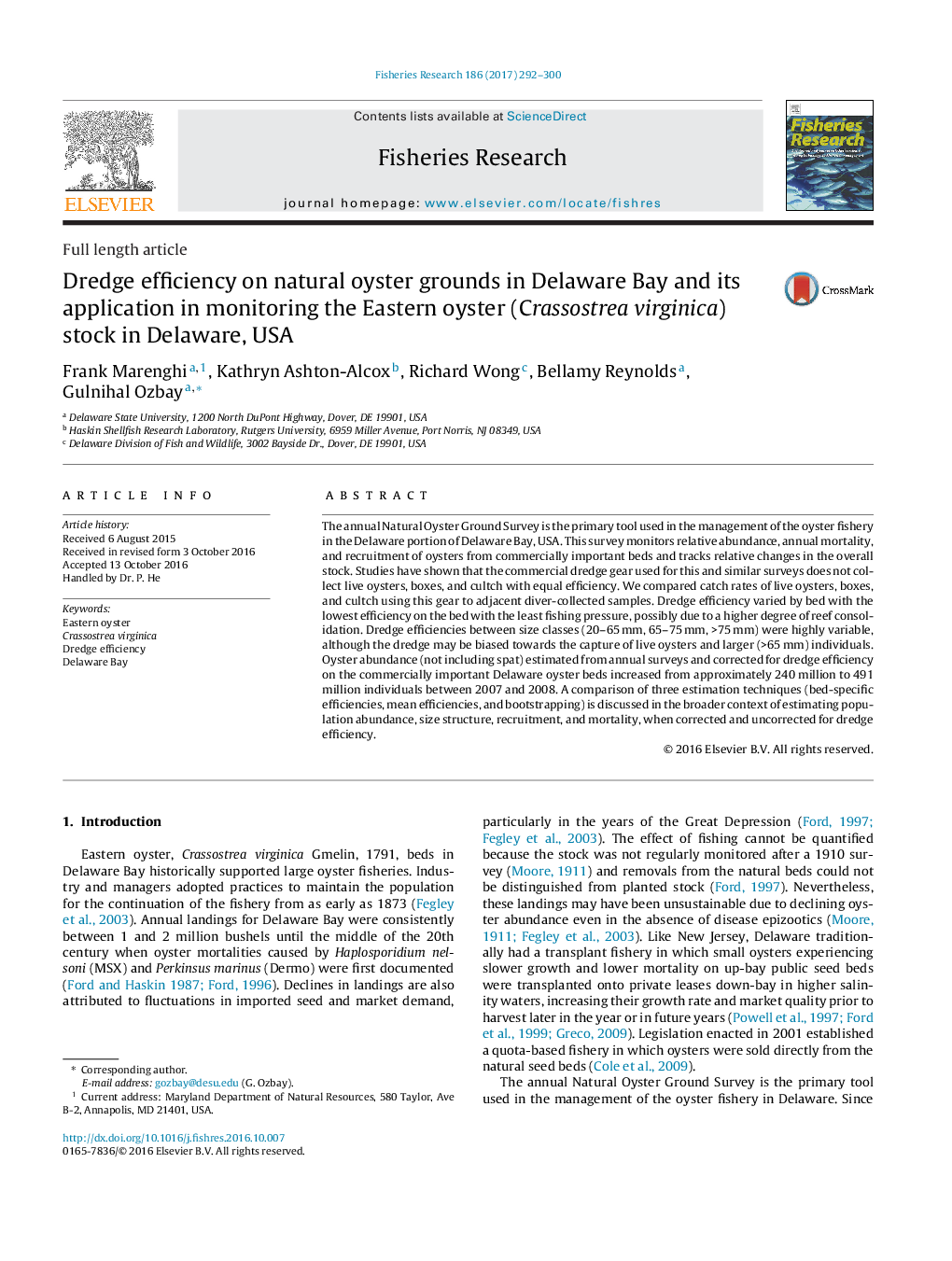| Article ID | Journal | Published Year | Pages | File Type |
|---|---|---|---|---|
| 4542623 | Fisheries Research | 2017 | 9 Pages |
The annual Natural Oyster Ground Survey is the primary tool used in the management of the oyster fishery in the Delaware portion of Delaware Bay, USA. This survey monitors relative abundance, annual mortality, and recruitment of oysters from commercially important beds and tracks relative changes in the overall stock. Studies have shown that the commercial dredge gear used for this and similar surveys does not collect live oysters, boxes, and cultch with equal efficiency. We compared catch rates of live oysters, boxes, and cultch using this gear to adjacent diver-collected samples. Dredge efficiency varied by bed with the lowest efficiency on the bed with the least fishing pressure, possibly due to a higher degree of reef consolidation. Dredge efficiencies between size classes (20–65 mm, 65–75 mm, >75 mm) were highly variable, although the dredge may be biased towards the capture of live oysters and larger (>65 mm) individuals. Oyster abundance (not including spat) estimated from annual surveys and corrected for dredge efficiency on the commercially important Delaware oyster beds increased from approximately 240 million to 491 million individuals between 2007 and 2008. A comparison of three estimation techniques (bed-specific efficiencies, mean efficiencies, and bootstrapping) is discussed in the broader context of estimating population abundance, size structure, recruitment, and mortality, when corrected and uncorrected for dredge efficiency.
